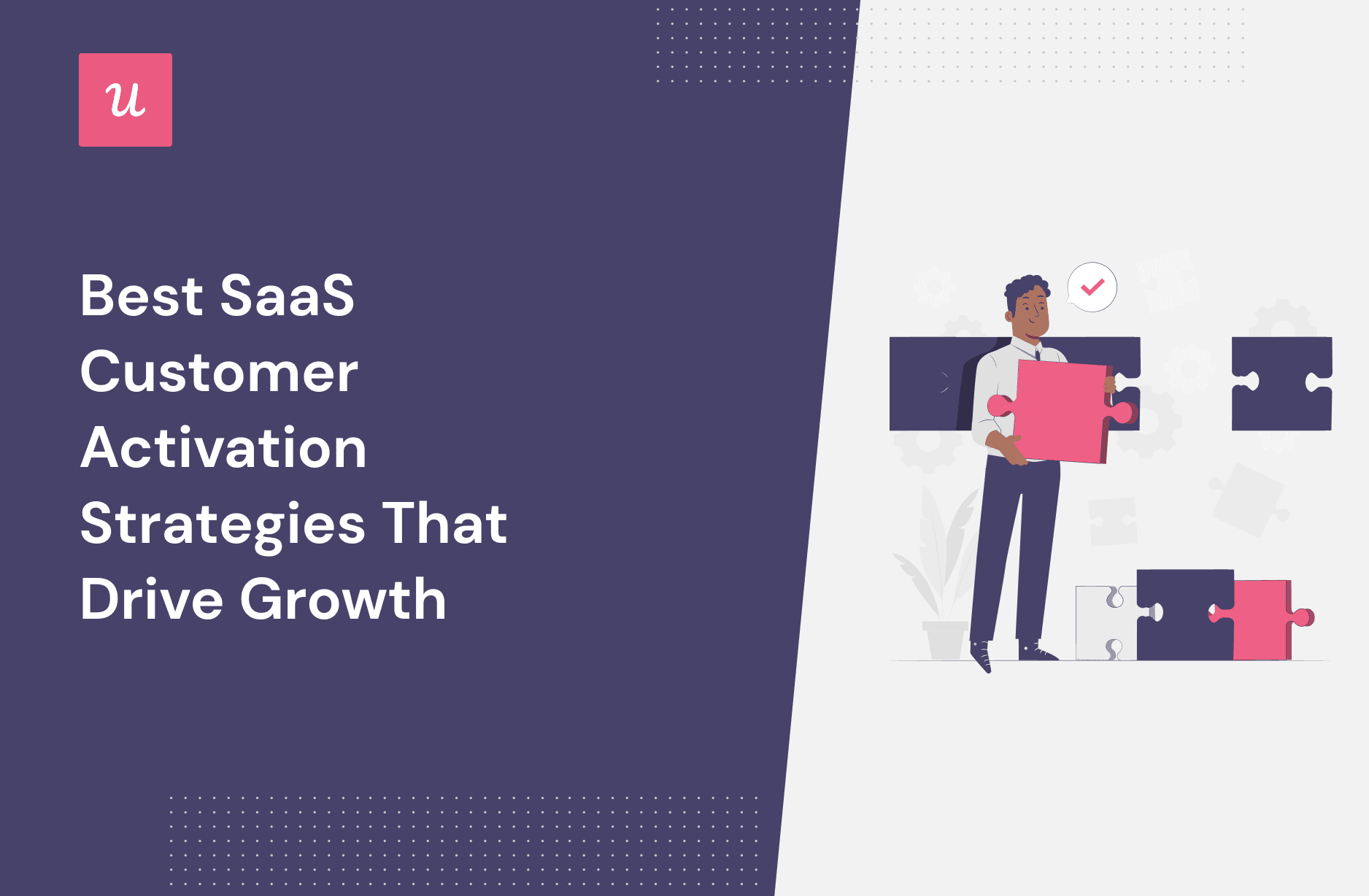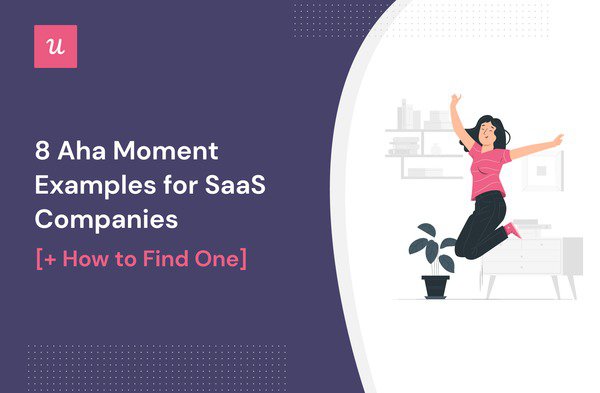
Driving activation is a critically important skill for SaaS owners and product managers: in this article, we’re going to explore the most effective activation strategies for driving growth and engagement.
We’ll start by exploring what customer activation is and why it matters, cover the difference between a customer activation strategy and brand activation, set out how to craft a customer activation strategy of your own, and discuss the best tools for the job.
Ready to get started? Let’s dive in!
Try Userpilot Now
See Why 1,000+ Teams Choose Userpilot

What is customer activation?
In a nutshell, customer activation describes the phase where your users begin to experience value from your product.
Typically, to reach that ‘activation point‘ customers have to engage in a series of key activation stages: first, to discover the core features of your product or service, and second to figure out exactly how those features help them solve their problems.
Why is customer activation important?
So, we know what customer activation is. But any product manager knows that prioritization is critically important in the SaaS game, and it begs the question…
Why should you focus your time and resources on improving the customer activation process?
We’ll explore three important reasons next.
Customer activation has the highest impact on revenue
Activation has a huge impact on revenue and the overall financial health of your SaaS. In fact, the data shows that a 25% increase in user activation brings an outsized impact of a 34% increase in MRR.

Focusing on customer activation leads to increased product adoption
On top of the financial impact, there are direct links between customer activation rates and product adoption.
Why?
Because the faster your users experience value from your SaaS, the greater the chance of them formally ‘adopting’ your product (and you retaining them as customers).
Higher customer lifetime value
Another benefit of an effective customer activation strategy?
You dramatically increase earning potential – not just immediately, but over an entire customer lifecycle. Existing, activated, and importantly loyal customers help add serious value to your brand (as they’ll typically spend more than new customers).
Customer activation strategy vs brand activation strategy
Before we get any further on, it’s important you understand the clear distinction between a customer activation strategy and a brand activation strategy.
- Customer activation is all about tweaking the actual customer experience to help your users reach the activation point (i.e. getting value from your product) as quickly as possible.
- Brand activation is a broader concept: a brand activation strategy will look to increase brand awareness with a focused target audience or market through diverse marketing efforts. The aim is essentially to attract new customers (and further engage existing customers).
This blog is primarily focused on creating a customer activation strategy, although of course building brand awareness is another important topic for product managers and SaaS owners to explore.
The elements of an effective customer activation strategy
We’ve covered the foundational concepts that underpin customer activation. But how exactly do you plan and deliver a successful customer activation strategy?
Identify your user persona
First things first: you need to understand that your customers are not one homogenous group. In all likelihood, your customers will fit into broad groups or personas, each of which will have different aims and objectives (you can think of these as their ‘jobs to be done‘).
Simply put, understanding and catering to their needs will increase activation.
Delivering a blanket service means you run the risk of disengaging your audience.
You can start to figure out these segments extremely early on: gather valuable insight during sign-up with clever questions.

Map the customer journey and understand the happy path
Next, spend some time understanding customer behavior, mapping their journey, and understanding their path to value. This is by no means a simple process, but it’s certainly worth your while.
Here are some handy questions to ask yourself as you’re trying to build up an accurate view of the as-is customer journey:
- What are the critical touchpoints your customers need to reach in order to get value from your product?
- What features do they need to engage with?
- What’s the shortest possible path to value for each of the user groups/segments you’ve identified?
If you can clearly answer these questions, you’ll have a much better chance of working out the actions your users should take at each step in the journey.

Implement a minimum viable onboarding playbook
Next up, consider minimum viable onboarding. This is all about driving your users to the activation point as speedily as possible. Often, that starts with putting together a playbook outlining outcomes, key tasks, actions, and UX patterns.
A good onboarding playbook should tell you the why (what’s the purpose), the what (key workstreams and activities), and how (specific tactics and implementation patterns).
Here’s a good example focused primarily on low-touch onboarding.

Measure results of your customer activation strategies and improve
If you’ve implemented the preceding steps, your users should be reaching the activation point frequently and consistently. But could there be more value to squeeze out sooner?
Remember the old adage from management expert Peter Drucker:
“What gets measured, gets managed.”
In this context, it means you should track progress toward specific activation goals. Why? Because it’ll give you valuable data you can use to iterate your customer activation strategy.

To develop the most effective customer activation strategy possible, you need to have a mindset of experimentation: for example, you could A/B test different in-app flows to see which drives the biggest impact toward your goals.

Gathering data, implementing changes, and continuous learning will help you keep your activation strategy fresh.
How to measure the success of your customer activation strategies
How do you know if you’re headed in the right direction when it comes to the customer activation strategies you are implementing?
While there’s an overwhelming number of metrics you could start to look at, here are some of the most important to understand.
- Activation rate. This metric determines how many users that began a trial reached an activation milestone and helps give you a good understanding of your overall activation success.
- Feature adoption rate. A more targeted measure that helps you to figure out how a specific feature is performing.
- Retention rate. The user retention rate tells you the percentage of users you’ve retained over a given time period. It’ll help you work out whether your activation strategies are helping you keep your users over time.
Customer activation strategies and tactics that work
In this section of the blog, we’re going to unpack some actionable activation strategies and tactics you can apply in your own SaaS to take your activation up a level.
Let’s dive in.
Personalize the empty screen and shorten the time to value
Don’t disengage your users with an empty screen. Every step in your onboarding process is an opportunity to engage your customers, share information, and get them heading in the right direction.
Shorten time to value by personalizing the empty state: it’ll not only showcase the best of your product in action but also teach users how to start using your main features.
Remember a blank screen is not only a missed opportunity: it might make your users concerned your product is frozen or glitching out.

Prompt users to take action with in-app checklists
Activation is about ensuring your users engage with your product’s core features. There are many levers you can pull to help drive them toward the necessary actions.

Using checklists should be on your top list of activation strategies to try.
Populating these with dummy tasks is proven to improve engagement, and a visual progress bar can help incentive users to persevere (as they get closer to the finish line).

Launch interactive walkthrough contextually
Another tool in your arsenal is interactive walkthroughs.
These are much more effective activation strategies than lengthy, boring product tours. Why?
Because they guide your users’ step by step through the exact process they’ll need to follow to get value from your product, shortening the learning curve drastically.

Interactive walkthroughs are even more potent when launched contextually: it helps ensure they’re as relevant and targeted as possible.
Use hotspots and tooltips to help users navigate the UI
Utilize the visual real estate of your product to its full potential.
Hotspots and tooltips are two impactful UI patterns to make use of: draw your user’s eye to critical areas of the screen they need to engage with, then share valuable information as necessary without cluttering the interface.

Offer self-service support to offer help when the user needs it
A vital part of the activation process is helping overcome barriers toward achieving value. That means solving your customers’ problems as quickly as possible. Self-service support makes that possible without needing a 24/7 customer success team.
Providing guides, videos, FAQs, product documentation and more in one handy repository gives your users the opportunity to solve their own problems.

How Userpilot can help you boost customer activation rates
When it comes to actually implement these strategies, you’ve got to pick the right tool for the job. Userpilot is a powerful option to consider for many reasons, some of which we’ll unpack in this section of the article.
Read on!
Collect customer data in-app to fuel your activation strategies
It’s simple and seamless to gather customer insight within the boundaries of your app with Userpilot.
Use welcome screens for more than simply greeting customers: collect information that’ll help you build a better understanding of your user base.

Segment and personalize the customer experience
Using the data you’ve gathered, you can then start to leverage Userpilot’s powerful segmentation capabilities to deliver a personalized, engaging customer experience that will skyrocket activation.

You can easily target distinct segments with in-app messaging or onboarding steps to create a customer journey more focused on enabling them to complete their ‘jobs to be done’ (and therefore experience value faster).
Build and test in-app flows
Userpilot makes it simple to quickly build vastly different types of in-app flow to prompt user action.

With Userpilot’s mobile SDK, you can create targeted onboarding flows using slideouts, carousels, and push notifications without writing extra code.
Checklists are a perfect example of leveraging this kind of capability: they’re pretty much a must-have during the activation stage. As a UI pattern goes, the way they drive and guide users in the right direction is unrivaled.
Conclusion
So, that was an exhilarating run through the world of activation. What have we learned? Hopefully, you now have a mental framework that’ll help you:
- Understand what customer activation is and why it’s important
- What goes into crafting an effective customer activation strategy
- The most effective tool for the job (and how to use it)
Want to get started with customer activation? Get a Userpilot Demo and see how you can turn casual consumers into loyal customers today.







